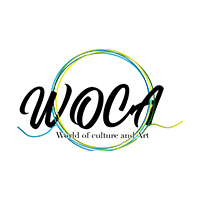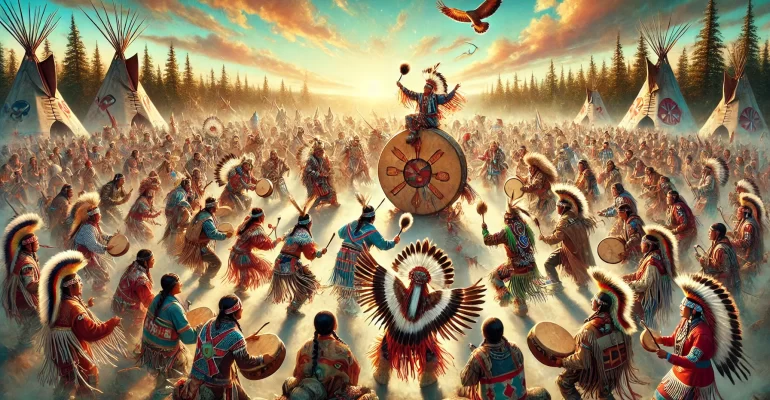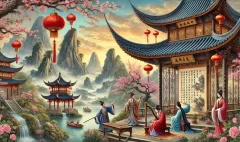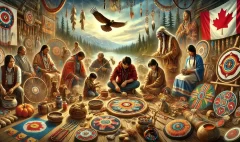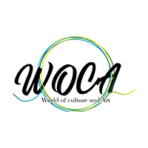The Heartbeat of Culture: Pow Wows and Drumming in Indigenous Traditions of Canada
The Heartbeat of Culture: Pow Wows and Drumming in Indigenous Traditions of Canada
Welcome to the vibrant and rhythmic world of Pow Wows and Indigenous drumming in Canada! In this comprehensive exploration, we’ll dive deep into the cultural significance, historical roots, and contemporary expressions of these powerful traditions. From the thunderous beats of ceremonial drums to the colorful spectacle of Pow Wow dancers, we’ll uncover the rich tapestry of Indigenous musical and cultural practices that continue to thrive across the nation.
Understanding Pow Wows: A Celebration of Culture and Community
A Pow Wow is much more than just an event – it’s a vital expression of Indigenous culture, a gathering that brings communities together, and a living tradition that connects past, present, and future generations.
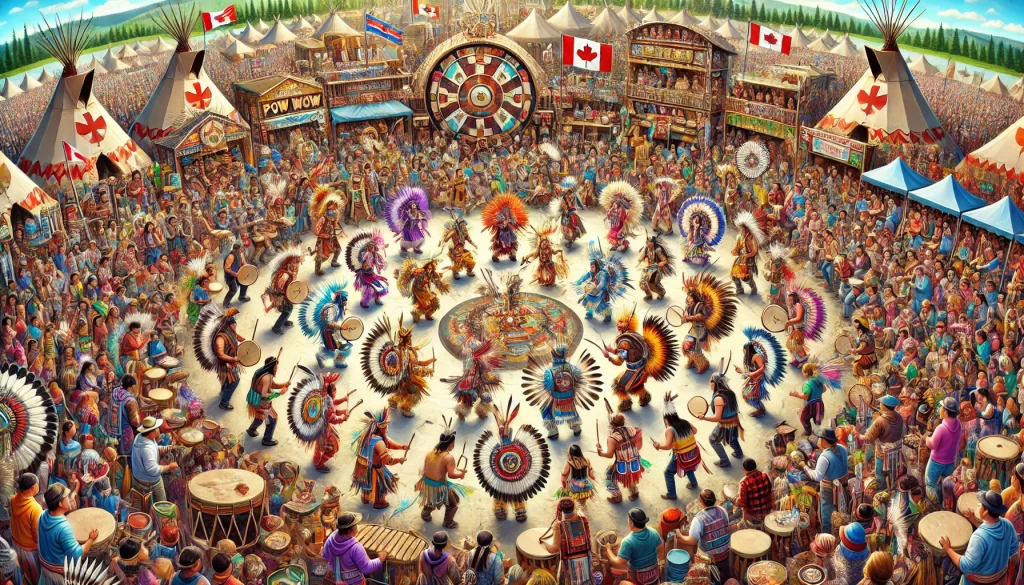
What is a Pow Wow?
At its core, a Pow Wow is a social gathering of Indigenous peoples, featuring dance, music, regalia, food, and crafts. The term “Pow Wow” comes from the Algonquin word “pau-wau” or “pauau,” which referred to a gathering of spiritual leaders or a healing ceremony. Over time, the meaning has evolved to encompass the broader cultural celebrations we see today. Pow Wows serve multiple purposes:
- Cultural Celebration: They are a way for Indigenous people to celebrate their heritage and traditions.
- Social Gathering: Pow Wows provide an opportunity for people to meet, reconnect with friends and family, and strengthen community bonds.
- Cultural Education: For both Indigenous and non-Indigenous attendees, Pow Wows offer a chance to learn about Indigenous cultures, traditions, and artforms.
- Competition: Many Pow Wows include dance and drumming competitions, showcasing skill and artistry.
- Economic Opportunity: Vendors at Pow Wows sell traditional crafts, food, and other goods, providing economic benefits to Indigenous artisans and entrepreneurs.
Types of Pow Wows in Indigenous Traditions of Canada
Pow Wows can be broadly categorized into two main types:
- Traditional Pow Wows: These are typically smaller, community-focused events that emphasize cultural practices and may include ceremonies. They often have stricter protocols and may not be open to the general public.
- Competition Pow Wows: Larger events that feature dance and drum competitions with cash prizes. These are usually open to the public and may attract participants from many different nations.
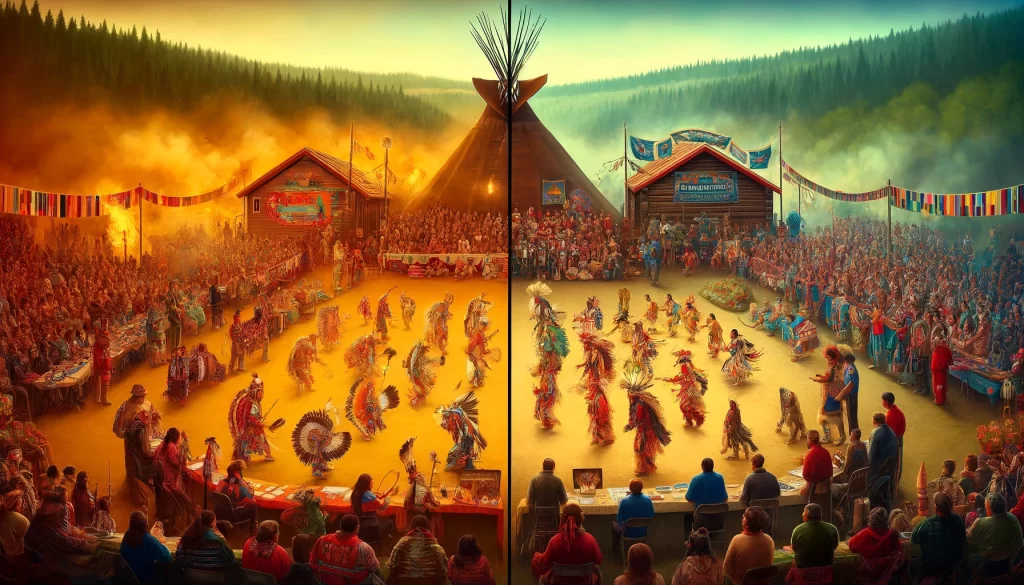
It’s important to note that the structure and content of Pow Wows can vary significantly between different Indigenous nations and communities.
The Structure of a Pow Wow
While specifics can vary, most Pow Wows follow a general structure:
- Grand Entry: This opening ceremony marks the official start of the Pow Wow. Dancers enter the arena in a specific order, often led by veterans carrying flags and eagle staffs.
- Intertribal Dances: These dances invite all participants to join in, regardless of their nation or dance style.
- Specific Dance Categories: These may include Traditional, Fancy, Grass, and Jingle Dress dances, each with its own regalia and style.
- Specials: These are dances or ceremonies for specific purposes, such as honoring veterans or celebrating a particular achievement.
- Closing Ceremony: This marks the end of the Pow Wow, often featuring a final dance and the retirement of the flags.
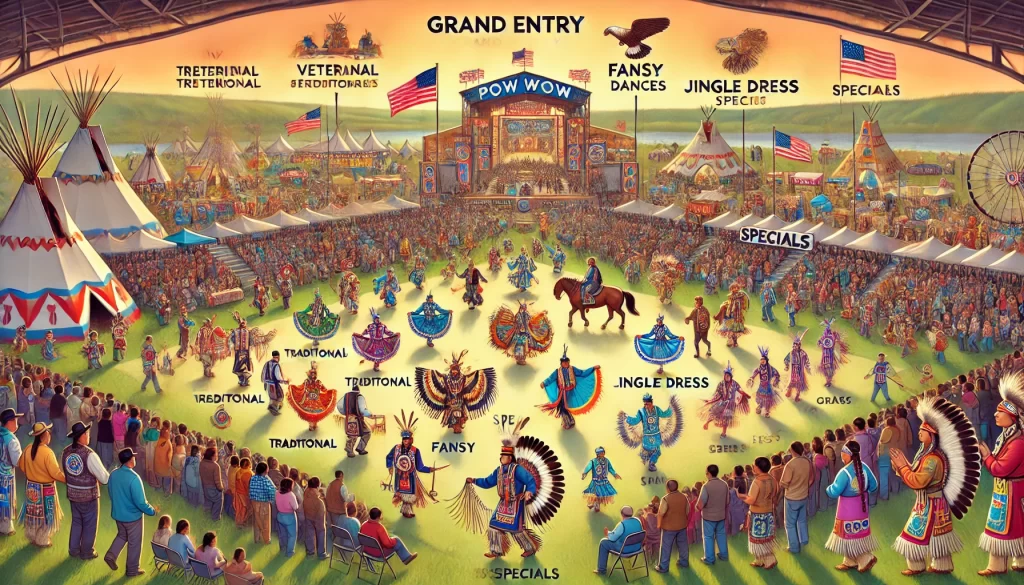
Throughout the Pow Wow, there are usually breaks for meals, socializing, and visiting vendor booths.
The Central Role of Drumming in Indigenous Cultures
Drumming is at the heart of Indigenous music and ceremonies, including Pow Wows. The drum is not merely a musical instrument; it holds deep spiritual and cultural significance.
The Spiritual Significance of the Drum
In many Indigenous cultures, the drum represents the heartbeat of Mother Earth. It’s seen as a living entity with its own spirit, deserving of respect and proper care. The circular shape of most Indigenous drums symbolizes the circle of life and the interconnectedness of all things.
Elder Mary Thundervoice explains, “When we play the drum, we’re not just making music. We’re connecting with the heartbeat of the Earth, with our ancestors, and with each other. The drum calls the spirits to join us and carries our prayers to the Creator.”
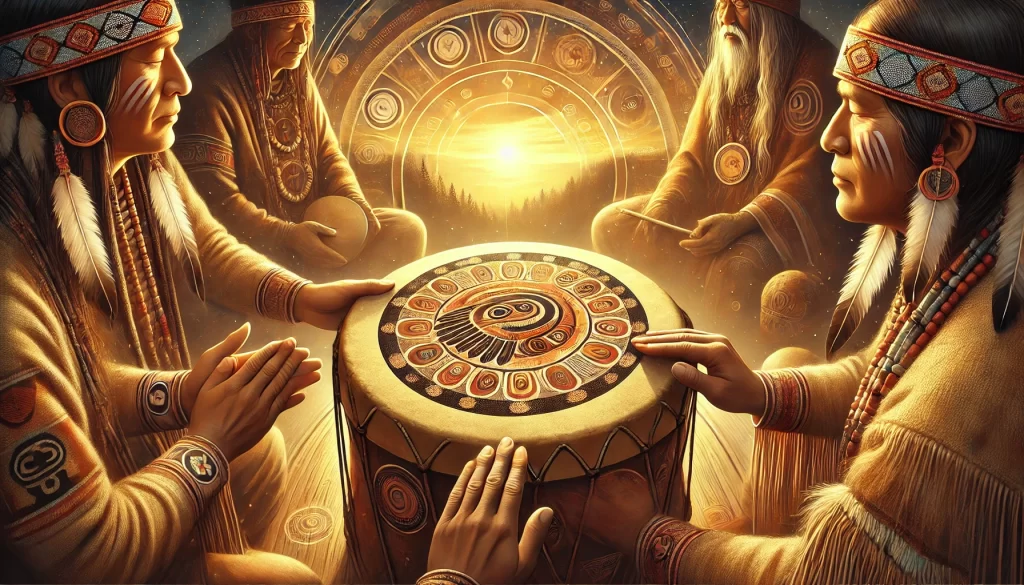
Types of Indigenous Drums
There are several types of drums used in Indigenous cultures across Canada:
- Big Drum (Pow Wow Drum): A large drum played by several people simultaneously. It’s central to Pow Wow music.
- Hand Drum: A smaller, portable drum held in one hand and played with a stick held in the other. These are often used in ceremonies and more intimate gatherings.
- Water Drum: Used in some nations, particularly in eastern Canada. It’s partially filled with water to create a unique resonant sound.
- Frame Drum: A thin drum with a wide wooden frame, common in many Indigenous cultures worldwide.
Each type of drum has its own traditions, playing techniques, and cultural contexts.
Drum Construction
The process of making a drum is often ceremonial and imbued with cultural significance. Traditional drums are typically made from wood and animal hide, though contemporary drums may use synthetic materials. The basic process involves:
- Selecting and preparing a wooden frame or hollowed log.
- Choosing and preparing an animal hide (often deer, elk, or buffalo).
- Stretching the wet hide over the frame and securing it.
- Allowing the hide to dry, creating tension for the desired sound.
- Decorating the drum with paint or other adornments, often incorporating symbolic designs.
Many drum makers follow specific protocols and may fast or pray during the drum-making process.
Pow Wow Drumming: The Heartbeat of the Gathering
At a Pow Wow, the drum is central to all activities. The term “drum” often refers not just to the instrument, but to the group of singers gathered around it.
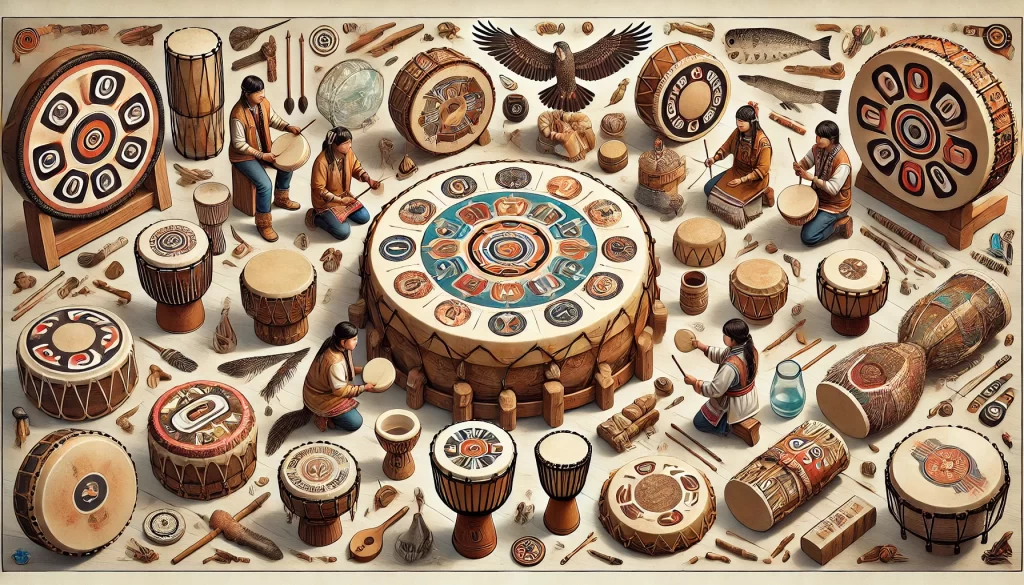
The Pow Wow Drum Group
A typical Pow Wow drum group consists of several singers (usually men in most traditions, though this is changing in some communities) seated around a large drum. One person serves as the lead singer, starting each song, while the others join in to create powerful harmonies. The number of singers can vary, but it’s common to see anywhere from 6 to 12 people around a drum. Some large Pow Wows may feature several drum groups who take turns providing music for the dancers.
Pow Wow Drumming Styles
While there are regional variations, two main styles of Pow Wow drumming are widely recognized:
- Northern Style: Characterized by a higher pitch and faster tempo. The singing often starts at a high pitch and descends.
- Southern Style: Features a lower pitch and slower tempo. The singing typically begins at a lower pitch and ascends.
These styles originated with Plains cultures but have been adopted more widely in the Pow Wow circuit.
Pow Wow Songs
Pow Wow songs serve various purposes and can be categorized into several types:
- Grand Entry Songs: Played to accompany the entrance of dancers at the beginning of a Pow Wow.
- Intertribal Songs: Open to all dancers, regardless of style or nation.
- Contest Songs: Specific songs for dance competitions.
- Honor Songs: Dedicated to recognizing specific individuals or groups.
- Veterans’ Songs: Honoring those who have served in the military.
- Closing Songs: Played at the end of the Pow Wow.
Many songs use vocables (syllables without specific meaning) rather than lyrics, allowing them to be shared across language barriers. However, some songs do include lyrics in Indigenous languages.
Drumming Traditions Across Nations
While Pow Wow drumming is widely recognized, it’s important to understand that different Indigenous nations have their own unique drumming traditions.
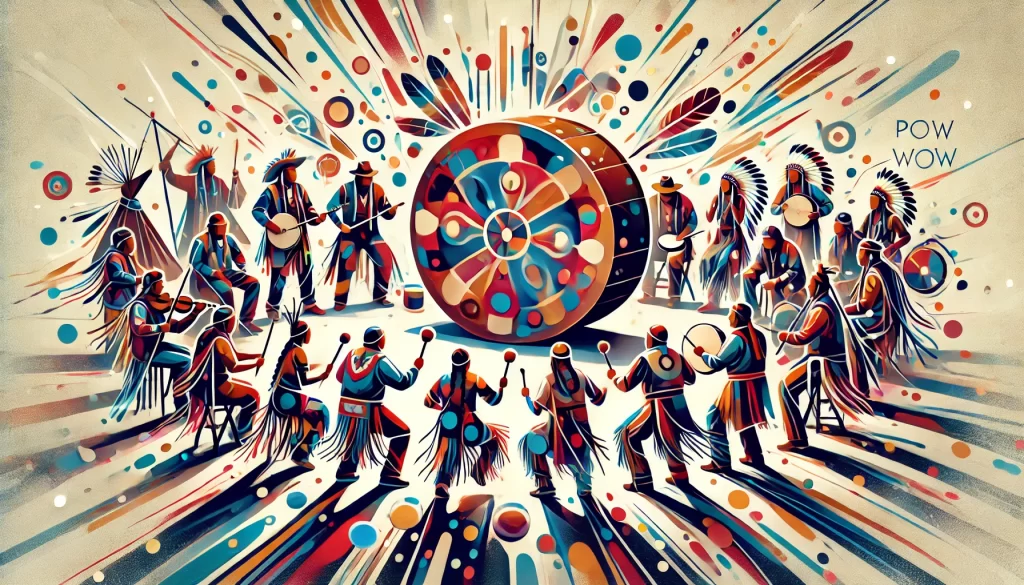
Plains Cultures
Plains nations, such as the Cree, Blackfoot, and Sioux, are often associated with the big drum and Pow Wow styles. Their drumming frequently accompanies large gatherings and ceremonies.
West Coast Nations
Coastal nations like the Haida, Kwakwaka’wakw, and Coast Salish often use hand drums in their traditional songs and dances. Their drumming may accompany potlatches and other cultural events.
Eastern Woodlands
Nations in eastern Canada, such as the Anishinaabe, Haudenosaunee, and Mi’kmaq, have diverse drumming traditions. Some use water drums in ceremonial contexts, while hand drums and big drums are also common.
Inuit Traditions
Inuit drumming often features a large, thin frame drum played by a solo performer. This drumming frequently accompanies throat singing and storytelling. It’s crucial to recognize that these are broad generalizations, and each nation and community may have its own specific traditions and protocols around drumming.
Learning and Respecting Drumming Traditions
For those interested in Indigenous drumming, it’s essential to approach the practice with respect and proper guidance.
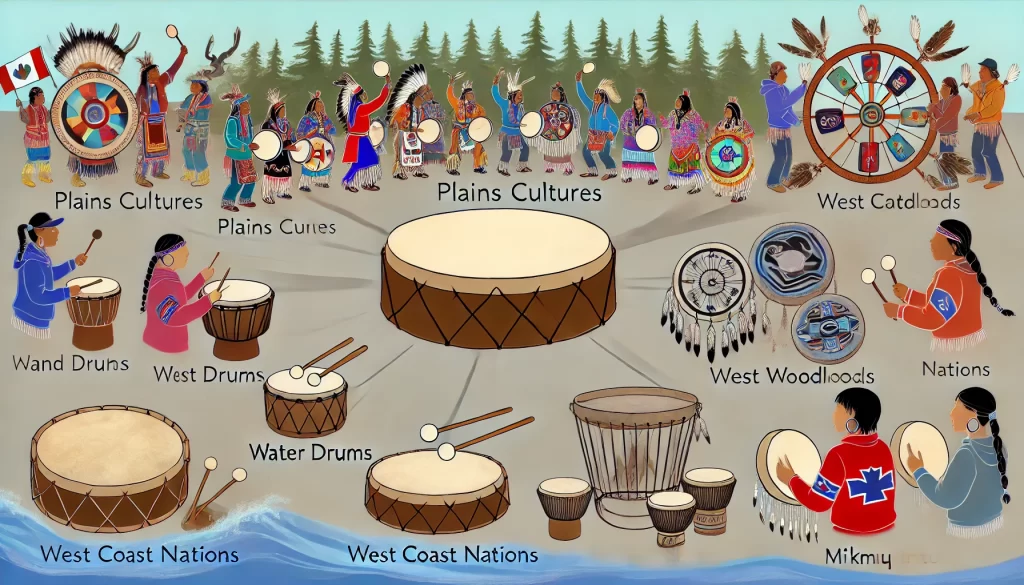
Protocols and Respect
Drumming, especially in ceremonial contexts, often involves specific protocols. These may include:
- Offering tobacco or other sacred medicines before playing or touching a drum
- Following specific rules about who can play certain drums or songs
- Understanding the appropriate contexts for different types of songs
Lisa Morningstar, a drum keeper from the Anishinaabe nation, explains, “Our drums are sacred. They’re not just instruments, but carriers of our culture and spirituality. It’s important for anyone wanting to learn to approach with humility and respect for the traditions.”
Learning Opportunities
Many communities offer appropriate ways for both Indigenous and non-Indigenous people to learn about drumming:
- Workshops and Classes: Often available at cultural centers or educational institutions.
- Mentorship: Some experienced drummers take on students to pass on their knowledge.
- Public Pow Wows: Offer opportunities to observe and appreciate drumming in context.
- Indigenous-led Music Programs: Some schools and universities offer courses in Indigenous music traditions.
The Evolution of Indigenous Drumming
Like all living traditions, Indigenous drumming continues to evolve while maintaining its cultural roots.
Contemporary Expressions
Today, many Indigenous musicians are incorporating traditional drumming into contemporary music genres:
- A Tribe Called Red (now known as The Halluci Nation): This group blends traditional Pow Wow vocals and drumming with electronic dance music.
- Ghostkeeper: This band integrates hand drumming with rock and experimental music.
- Tanya Tagaq: This Inuit artist incorporates traditional drum rhythms into her innovative vocal performances.
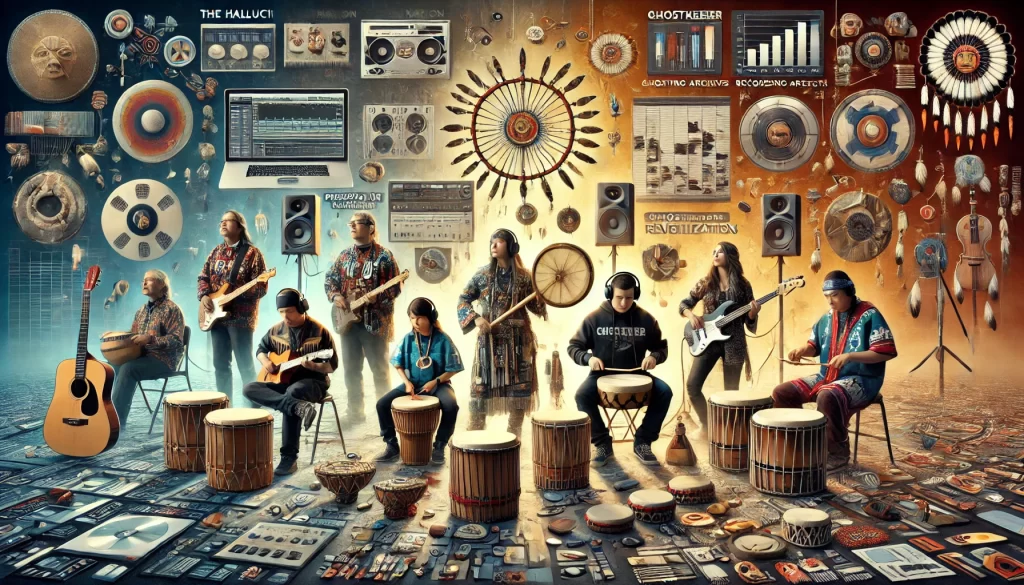
Preservation and Revitalization
Efforts are ongoing to preserve and revitalize drumming traditions:
- Recording Projects: Many communities are documenting their traditional songs to preserve them for future generations.
- Youth Programs: Initiatives to teach young people traditional drumming and singing.
- Digital Archives: Creating accessible digital libraries of traditional music.
David Moskito, an Indigenous music archivist, notes, “We’re using modern technology to keep our ancient traditions alive. It’s a way of ensuring that the heartbeat of our cultures continues to resonate for generations to come.”
Conclusion: The Enduring Power of the Drum
From the thunderous rhythms of a Pow Wow to the gentle beat of a hand drum in a quiet ceremony, Indigenous drumming traditions continue to play a vital role in the cultural life of Canada’s First Nations, Métis, and Inuit peoples. These traditions are not static relics of the past, but living, evolving practices that connect Indigenous people to their heritage while also creating space for innovation and contemporary expression. The drum serves as a powerful symbol of cultural resilience, a tool for community building, and a bridge between generations.
For Indigenous peoples, the drum is indeed the heartbeat of their cultures – a constant rhythm that has persevered through challenges and continues to inspire, heal, and unite. For non-Indigenous people, these drumming traditions offer a profound window into the rich cultural tapestry of Canada’s Indigenous peoples. As we’ve explored in this article, the world of Pow Wows and Indigenous drumming is deep and complex, filled with meaning, protocol, and diversity. By understanding and respecting these traditions, we all have the opportunity to appreciate the beauty and significance of this enduring cultural expression.
The next time you hear the beat of an Indigenous drum, remember that you’re not just listening to music – you’re experiencing the heartbeat of nations, the echo of ancient traditions, and the vibrant pulse of living cultures.
